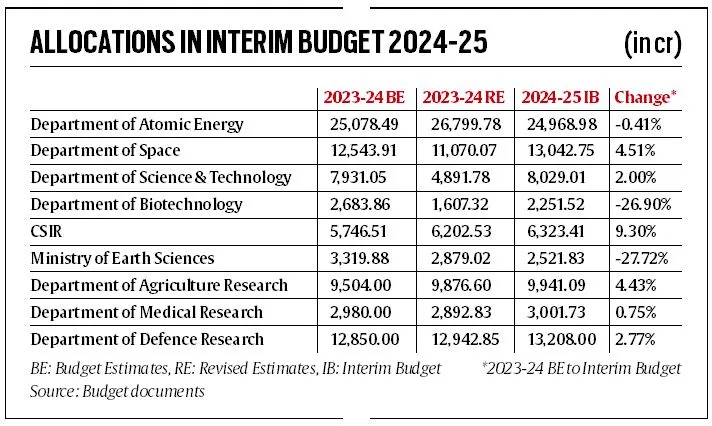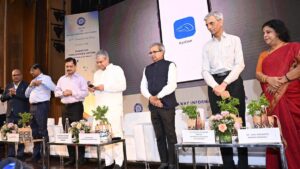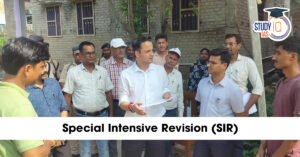Table of Contents
Removal Of Assembly Speaker
Context: The newly formed Bihar government passed a no-confidence motion against the Speaker of the Bihar Legislative assembly.
Procedure For the Removal of Speaker
- Article 179 of the Indian Constitution: It deals with the vacation, resignation, and removal from office of both the Speaker and Deputy Speaker.
- Clause (c): Speaker and Deputy Speaker may be removed from his office by a resolution of the Assembly passed by a majority of all the then members of the Assembly.
- Before resolution can be moved it is mandatory to give 14 days notice manifesting intention to move such resolution to the Secretary.
- During the period when resolution is under consideration the Speaker or Deputy Speaker cannot preside.
- In this period such other persons as rules of Assembly provide or person determined by the Assembly shall act as the Speaker.
- Clause (c): Speaker and Deputy Speaker may be removed from his office by a resolution of the Assembly passed by a majority of all the then members of the Assembly.
We’re now on WhatsApp. Click to Join
Fencing of India – Myanmar Border
Context: The Government of India planned to build an advanced smart fencing system along the India- Myanmar border which effectively ends the Free Movement Regime.
Need For Smart Fencing System
- To strengthen the existing surveillance system.
- To curtail the violence caused by insurgent groups.
- Manipur is affected by the activities of Meitei, Naga, Kuki, Zomi, Hmar insurgent groups.
- The state also accounted for 137 of the 201 insurgency events reported across northeastern India in 2022.
- Manipur is affected by the activities of Meitei, Naga, Kuki, Zomi, Hmar insurgent groups.
What is the Free Movement Regime (FMR)?
- The FMR, a bilateral agreement between India and Myanmar, all the hill tribes, whether they are citizens of India or Myanmar, can travel within 16 km on either side of the Indo-Myanmar Border (IMB) without needing a visa.
- This regime allows border residents to cross with a border pass, typically valid for one year, and permits stays of up to two weeks for each visit.
- This helps locals to get more culturally assimilated with trans-border villages through weddings, celebrating common festivals together and trans-border trade.
- Enacted in 2018, this regime was part of India’s broader Act East policy initiative.
- In response to the political upheaval in Myanmar post the 2021 coup and the subsequent surge in migrants, India temporarily halted the FMR in September 2022. This led to over 40,000 refugees seeking refuge in Mizoram, with an estimated 4,000 additionally entering Manipur.
Concerns Related to the FMR
- Security Risks: The FMR allowed for relatively unrestricted movement which can be exploited by insurgents and terrorists to cross the border undetected.
- Illegal Activities: The regime makes it easier for individuals to engage in illegal activities such as smuggling goods, drug trafficking and arms across the border.
- Challenges in Monitoring: Due to the free movement, it becomes difficult for border security forces to monitor and differentiate between regular community members and those engaging in illegal activities.
- Insurgent Movement: Insurgent groups, including factions like the National Socialist Council of Nagaland- Khaplang (NSCN-K), utilise the porous borders facilitated by the FMR for their movement, which poses a threat to national security.
- Strain on Law Enforcement: The regime puts additional strain on law enforcement and border patrol resources, which may already be limited in these remote areas.
No Confidence Motion
Context: The Leader of Opposition in Haryana state assembly decided to introduce a no-confidence motion against the ruling government.
| About No-Confidence Motion |
|
|
PYQ |
Q. Consider the following statements regarding a No-Confidence Motion in India:
Which of the statements given above is/are correct? (a) 1 only (b) 2 only (c) Both 1 and 2 (d) Neither 1 nor 2 Answer: Option (c) |
Satellite Based Toll Collection
Context: The government of India planned to implement satellite-based toll collection on highways.
About Satellite Based Toll Collection
- Aim: For barrier-free movement on highways, eliminating the need for vehicles to stop for toll payments.
- Working: This system captures the vehicle’s registration plate photo and charges tolls based on the distance travelled on the highway.
- It’s set to replace the radio frequency identification-based FASTag system.
- Nodal Ministry: The Ministry of Road Transport and Highways, along with the National Highways Authority of India, is responsible for implementing this technology.
- Process for Registration: Vehicles will need an onboard unit (OBU) linked to satellites and a wallet for toll deductions.
Neural Networks
Context: Recently, scientists and researchers discovered a new class of antibiotics using artificial neural networks (ANNs).
About Neural Networks
- Neural networks (also known as artificial neural networks (ANNs) or simulated neural networks (SNNs)), are a series of algorithms that mimic the operations of a human brain to recognize relationships between vast amounts of data.
- Structure:
- Network is built with layers of interconnected nodes (artificial neurons).
- Three main types of layers: input, hidden (one or more), and output.
- Each node has a “weight” and a “threshold” associated with it.
| Facts |
|
- Function:
- Input data activates nodes based on weight and threshold.
- Activated nodes send data to the next layer.
- Training data helps the network learn and improve accuracy.
| Two steps for neural networks to make predictions are: |
|
- Applications:
- Powerful tools for classification and clustering data.
- Faster processing compared to manual identification.
- Used in tasks like speech and image recognition, etc.
PRITHVI Scheme
Context: The Union Cabinet approved Rs 4,797 crore for PRITHVI scheme to boost and maintain research momentum in the fields of ocean, atmospheric and polar sciences.
About PRITHVI Scheme
- About the Scheme: This initiative is a holistic program focused on exploring and understanding the five key components of the Earth system to improve Earth System Sciences and provide dependable services nationally.
- Aim: Persistent research in Earth’s atmosphere, hydrosphere, cryosphere, geosphere and biosphere.
- Nodal Ministry: Ministry of Earth Science.
- Duration: From 2021 to 2026.
- Integration: The scheme encompasses and refines five pre-existing initiatives:
- ACROSS: Focuses on climate research and predictive modelling.
- O-SMART: Dedicated to the responsible harnessing and technological innovation of marine resources.
- PACER: Investigates Earth’s polar and frozen environments to enhance climate change understanding.
- SAGE: Committed to advancing seismic monitoring and geological studies.
- REACHOUT: Aims to bridge the gap between research and societal services while promoting education and training in the field.
Deep Tech
Context: In the interim budget, the Fnance Minister announced a Rs 1 lakh crore fund for long-term, low-cost research loans aimed at fostering development and innovation, particularly in deep-tech capabilities.
About Deep Technology
What is it?
- Refers to advanced, disruptive technologies with transformative potential.
- Examples: nanotechnology, biotechnology, material sciences, quantum tech, AI, data science, robotics, 3D printing.
Significance:
- Holds solutions for major global challenges: climate change, hunger, epidemics, energy access, etc.
- Boosts productivity, drives economic growth, and creates jobs.
- Offers competitive advantage to countries with strong foundations.
India’s potential:
- Strong science & engineering talent and tech culture.
- Opportunity to contribute to development, gain early adoption, and build self-reliance.
- Potential for spin-off technologies, skilled workforce, entrepreneurship, and tech exports.
Government Efforts
- National Missions: Establishing dedicated missions like “Transformative Mobility and Battery Storage” and “National Quantum Mission” shows commitment to specific areas related to deep technology.
- National Deep Tech Startup Policy (NDTSP): This framework addresses challenges faced by startups and aims to create a supportive ecosystem through:
- Funding: Providing access to long-term funding for research projects.
- Intellectual Property: Strengthening the IP regime for better protection.
- Incentives: Offering tax breaks and other incentives to attract investment.
- Regulation: Fostering a conductive regulatory environment.
- Standards & Talent: Developing standards and nurturing skilled professionals.
- Collaboration: Facilitating links between industry, research, and academia.

Challenges
- Research Spending: India’s R&D expenditure as a percentage of GDP (0.65%) is much lower than the global average (1.8%) and even lower than its own stated target of 2%.
- Funding Shortfall: Scientists argue that the government needs to significantly increase public research funding alongside relying on private investment.
- Uneven Distribution: The Interim Budget indicates unequal distribution of funds, with limited increases for major scientific bodies like CSIR (9%) and Department of Space (4%).
- Some crucial departments like Atomic Energy, Biotechnology, and Earth Sciences faced budget cuts.
Conclusion
- While the ₹1 lakh crore corpus offers a potential boost to deep tech research, relying heavily on private investment raises concerns about sustainability and equity.
- Increased public funding, streamlined disbursement processes, and a more balanced budget allocation are crucial for success.


 RailOne App: Indian Railways Launches Al...
RailOne App: Indian Railways Launches Al...
 Special Intensive Revision (SIR) of Elec...
Special Intensive Revision (SIR) of Elec...
 Daily Quiz 01 July 2025
Daily Quiz 01 July 2025





















